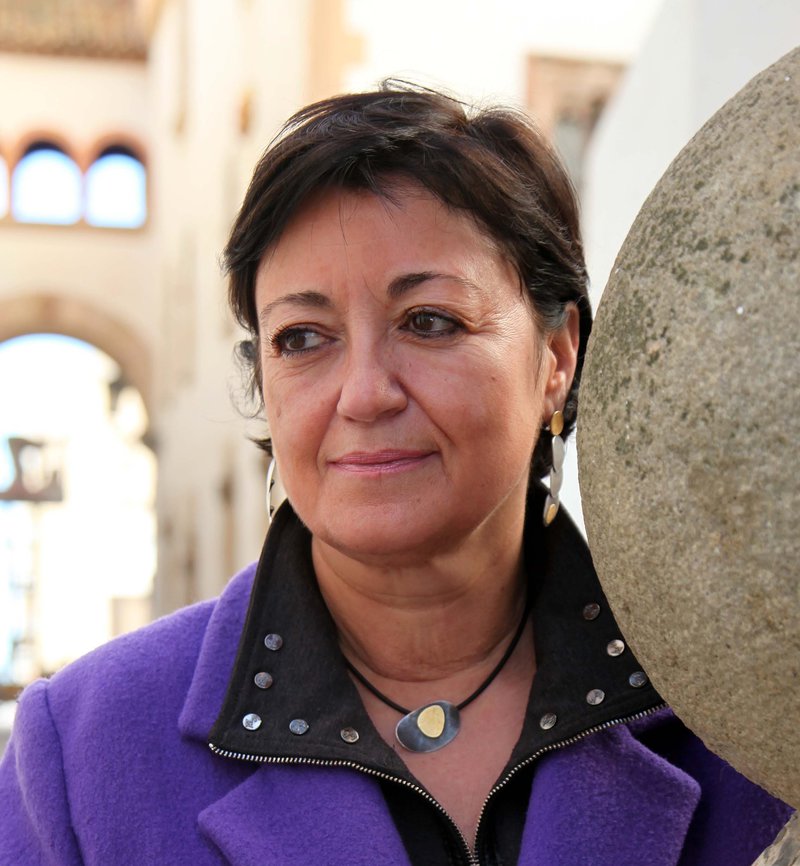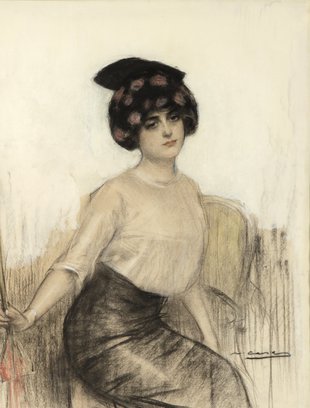Casas commemorated
This year is the 150th anniversary of the birth of Catalan painter Ramon Casas
One of the most repeated clichés about artist Ramon Casas (1866-1932) is that he would now be known as the Modernist painter if he had been French rather than Catalan. Presuming there is some substance to the claim, 150 years since the birth of Casas, as it is this year, would have been internationally celebrated. The truth of this can be seen in the reactions abroad to his work. In just about all reviews of the exhibition, Barcelona & modernity: from Gaudí to Dalí, which took place in New York's MOMA in 2007, Casas is mentioned as the surprise package. In The New York Times, critic Michael Kimmelman wrote that “Casas was better than Picasso for many years.”
A creator of icons, a superb draughtsman, with a liking for glamour and sensuality when it came to portraying women (his preferred subject) but also to-the-point and socially-aware when he painted works such as The Charge, as well as being an efficient poster artist and illustrator, Casas was basically a modern man for his times, in both his art and his life. In fact, Casas is a symptom, in the sphere of painting, of the splendour of Catalan art at the turn of the 20th century. And, obviously, he was not alone: Isidre Nonell, Santiago Rusiñol, Anglada Camarasa and many others accompanied him on his artistic journey.
Fortunately, Casas is within reach of any art-lover wishing to see his work. The greatest Casas gallery is without doubt the Museu Nacional d'Art de Catalunya (MNAC), which in its presentation of Modernism makes his painterly side shine almost as brightly as his work as a poster artist and draughtsman. However, masterpieces by the Barcelona painter are to be found all over, including the Museu de Montserrat, the Museus de Sitges, the Museu Comarcal de la Garrotxa in Olot, the Museu del Modernisme de Barcelona, and so on.
The last great retrospective exhibition of Casas took place in 2001 in the MNAC, which is the excuse the gallery has made for not putting on any exhibition of the painter this year to commemorate the 150th anniversary of his birth. Yet the Any Casas, promoted by the Generalitat's culture department, has numerous activities planned, though many have still not been fully tied down: “We are a bit late,” admits the newly-appointed curator of the commemorations and director of the Museus de Sitges, Vinyet Panyella, who estimates that the full programme of events for the Any Casas should be ready to be presented this month.
Nevertheless, there are exhibitions that can already be announced. A unique opportunity for many visitors will be the chance to enter the Cercle del Liceu, which will display a marvellous collection of Casas's work. The Cercle will open its doors to the public in spring, with an exhibition focusing on the figure of Júlia Peraire, the artist's great model and muse, who he met in 1906 when she was selling lottery tickets. The two married in 1922.
Sitges exhibition
The Museu de Maricel in Sitges is also preparing an exhibition: Ramon Casas, la modernitat anhelada, curated by Ignasi Domènech, from the Museus de Sitges, and MNAC's Francesc Quílez, which will explore in particular “how Casas searched for aspects of modernity and how he portrayed them.” The exhibition could also go on tour, thanks to an agreement with the Fundació La Caixa “to do a re-reading of Casas, above all bearing in mind that the man and his work have been widely studied.” Sitges will also have routes on Casas, in Cau Ferrat and the Museu de Maricel.
The Any Casas has also confirmed the publication of Santiago Rusiñol's accounts of his time in Paris, under the title, Desde El Molino, which is illustrated by Casas. It is a collection of articles written between 1890 and 1892 and published in La Vanguardia newspaper.
The Museu del Modernisme de Barcelona, on the other hand, has acquired the web address, Ramoncasas.cat, which went into operation at the start of the year, acting as the starter-gun for the commemorative year. The gallery is also preparing two exhibitions for the Any Casas. On March 10, coinciding with the sixth anniversary of the gallery, a retrospective of the painter is scheduled to open that will take up the whole gallery with works from its own collection and loans from abroad. The intention is “to ask for iconic works,” says Gabriel Pinós, head of the private museum.
Casas and Testino
The gallery, which will cooperate in the Cercle del Liceu exhibition, is also looking into putating on another exhibition that will try “to establish a parallel between Casas's work as an illustrator and the photography of Mario Testino, renowned for his fashion and publicity work.
Apart from the exhibitions in the Museu del Modernisme, there will also be guided tours of places associated with Casas, including outside of Barcelona in places like Sitges (where he had a house) and the monastery of Sant Benet, in Sant Fruitós de Bages. In the Món Sant Benet complex, where the painter had a summer residence, there are already almost daily guided visits about the painter. The Fundació Catalunya La Pedrera, which runs the site, will add more activities as part of the Any Casas.
However, one project for 2016 that has been put back for the moment is a planned book of Casas's drawings by a team headed by Isabel Coll in the Museu del Modernisme.
Traveller, painter and a representative of Modernism
For Vinyet Panyella, the figure of Ramon Casas needs to be revised for the 21st century, given that “his work has become representative of the Modernism imported from Paris, of the social vision of the multitudes, of a certain way of capturing the female form and of the advertising potential of his poster art.” The curator of the commemoration also points out that Casas's work “attracts the attention of all types people captivated by its force, expressiveness and quality.”
Apart from his purely artistic work, there are other facets of the painter that deserve attention this year, such as his role as a patron, collector and traveller, adds Panyella. One example of Casas as a traveller (he was one of the first people in Catalonia to own a motor car) is his relationship with the US businessman Charles Deering, who fell in love with his work the first time he saw it. With Deering, Casas visited the Netherlands, Biarritz, Seville and Madrid but it was at the invitation of the businessman and the builder of the Palau de Maricel in Sitges that Casas travelled to the US and visited its most important cities.
However, Casas is also strongly linked to his native city, although due to the closure of the Vinçon design shop, his flat on passeig de Gracia 96 is currently closed to the public. When the shop was still open, it was possible to see the first-floor flat, with its open fireplace, and imagine how the bourgeois painter who painted bourgeois subjects once lived.










